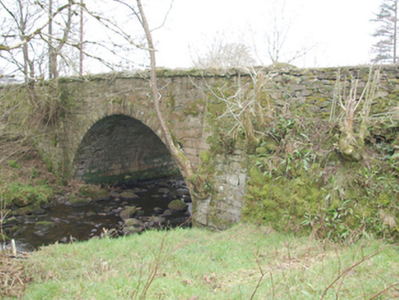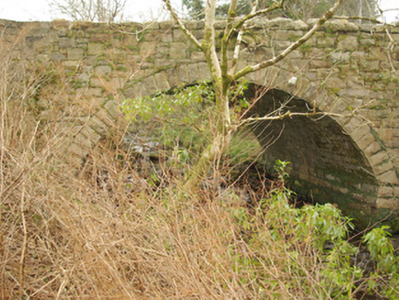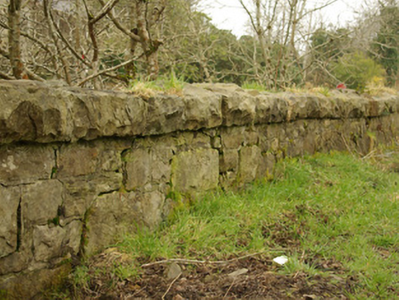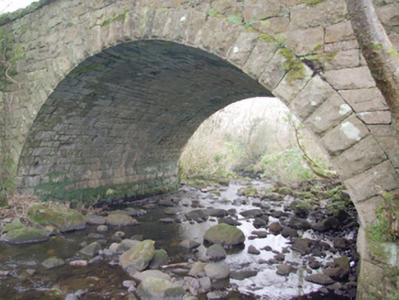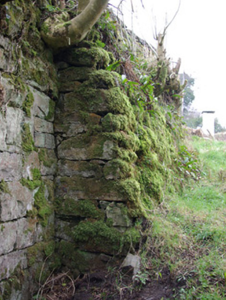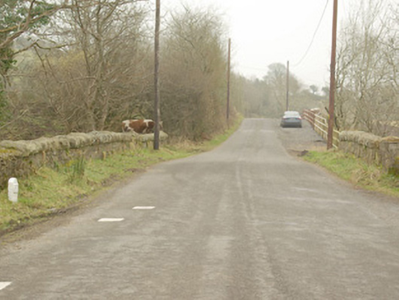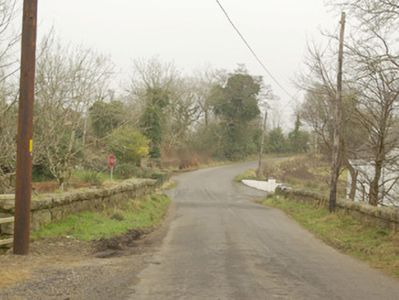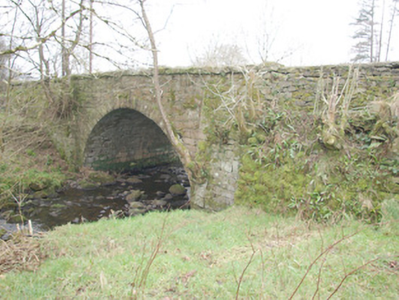Survey Data
Reg No
40909406
Rating
Regional
Categories of Special Interest
Architectural, Technical
Original Use
Bridge
In Use As
Bridge
Date
1850 - 1880
Coordinates
198760, 378812
Date Recorded
13/09/2007
Date Updated
--/--/--
Description
Single-arched bridge carrying road over the Drummenny River, built c. 1860, having battered buttresses to either side of arch to both the east and west elevations. Possibly containing fabric of earlier bridge to site. Segmental-headed arch having rock-faced voussoirs to arch having dressed margins; squared and coursed rubble stone construction to arch barrel. Squared and snecked rubble stone construction to parapets and spandrels with rock-faced cut stone coping over parapets. Some modern repairs to parapets. Rubble stone wing walls to either side. Tarmacadam deck with grass verges. Located in the rural landscape to the east of Donegal Town.
Appraisal
This appealing and well-built bridge retains its early character and form, and is a feature of some picturesque merit in the rural landscape to the east of Donegal Town. It is robustly-constructed in good-quality squared and snecked local rubble stone masonry, and its continued survival and use stands as testament to the quality of its original construction, and of the skill of the masons involved. The elegant wide arch is of some technical merit. The good-quality rock-faced voussoirs to the arches, the heavy rock-faced coping over the parapets, and the projecting buttresses flanking the arch are features found at the many bridges that were built or altered by the Board of Works during the mid-to-late nineteenth century, and particularly between c. 1847 - 60, suggesting that this bridge may have been built or heavily altered around this time. However, a bridge is depicted on this site on the Ordnance Survey first edition map of 1837, and it is possible that this bridge contains earlier fabric (probably to the wing walls to either side). This appealing bridge is an attractive feature in the landscape, and is an integral element of the built heritage of the local area.

